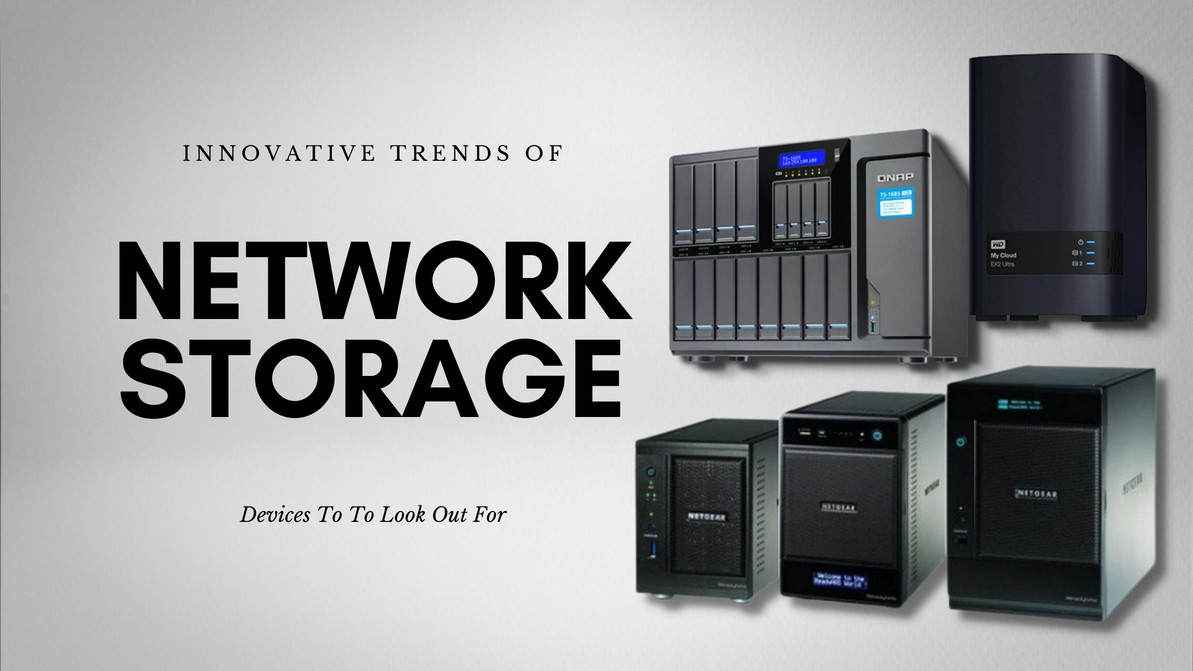Innovative Network Storage Trends to Look Out For
IT managers and professionals need more efficient ways of dealing with the massive data waves that AI, IoT devices, and many other sources have generated.
Fortunately, the technology nowadays allows for network storage devices and methods to improve and develop.
Innovative Network Storage Trends
Here are some of the innovative network storage trends that can possibly change the network storage industry as we know it.
Software-defined storage
Software-defined storage or SDC offers automation, flexibility, increased storage capacity, and improved staff efficiency. That said, it is understandable if enterprises are considering a transition to SDS.
SDS can separate storage resources from their underlying hardware. It is also designed to operate on any industry-standard x86 system.
Software-defined storage offers smarter interactions between workloads and storage, agile storage consumption, and real-time scalability.
NVMe or NVMe-oF
NVMe or Non-Volatile Memory express runs on top of the Peripheral Component Interconnect express or PCIe layer. NVMe is a much more powerful communications protocol targeting high-speed flash storage systems.
NVMe can utilize the performance of high-end SSDs which supports low-latency commands and parallel queues. Simply put, NVMe offers higher performance and lower latencies for existing applications than legacy protocols while also enabling new capabilities for real-time data processing in the data center.
This network storage technology can significantly benefit data-driven businesses, especially ones that need real-time data analytics.
Computational Storage
Computational storage comes with many benefits. It can be used in several different ways. Its many uses include something as little as using small edge devices to filter data before sending it to the cloud to something as big as storage arrays providing data sorting for databases to rack-level systems transforming large datasets for big data applications.
Computational storage also allows the manager to identify applications that the company can use to improve efficiencies.
Storage-Class Memory
Storage-Class Memory or SCM is not a new concept. It has been around for several years, but the following years may finally be its time to shine.
Technology such as Intel Optane, Toshiba XL-Flash, and Samsung Z-SSD memory modules have around for some time, but their existence is not exactly life-changing.
However, with the fast development of technology nowadays-- earth-breaking storage-class memory may be well on its way.
The Intel device is fast but volatile; DRAM is slower but persistent. SCM combines the best qualities of these two devices which results in a combo that can boost users' ability to work with large datasets.
Intent-Based Storage Management
Intent-based storage management aims to improve the planning, design, and implementation of storage architectures. It is suitable for organizations dealing with mission-critical environments.
This type of approach can deliver the standard benefits that users have been enjoying in networking such as rapid scaling, operational agility, and adoption of emerging technology.
However, intent-based storage management is more than just that. It can compress deployment time and administrative effort by orders of magnitude, compared to conventional storage administration without being prone to error.
Intent-based storage management allows IT managers, professionals, and developers to simply adjust storage policies instead of spending days manually tuning each array.
But of course, intent-based storage management is by no means a one-size-fits-all technology.
Bottomline
For a long time, the progress in storage technology was only measured by their capacity and speed. However, times are changing and there is more to a storage device than just its speed and capacity.
These benchmarks have become the standard, but the criteria for measuring storage technology progress have been replaced by new technologies and methodologies that make storage better, smarter, more flexible, and more manageable.
Recent Posts
-
Why It's Important to Purchase Genuine HPE Replacement Parts
When maintaining the integrity and performance of your Hewlett Packard Enterprise (HPE) systems, the …Jun 28th 2024 -
Mastering Modern Data: Cutting-Edge Storage Solutions in the AI Era
In the rapidly evolving digital era, Artificial Intelligence (AI) has become a cornerstone of innov …Jun 20th 2024 -
Product Comparison: HPE Q1J00A MSA 2050 vs. HPE Q1J10A D3710 vs. HPE 717870-001 MSA 2040
IntroductionIn today’s data-driven world, the demand for efficient, reliable, and scalable data stor …May 23rd 2024




